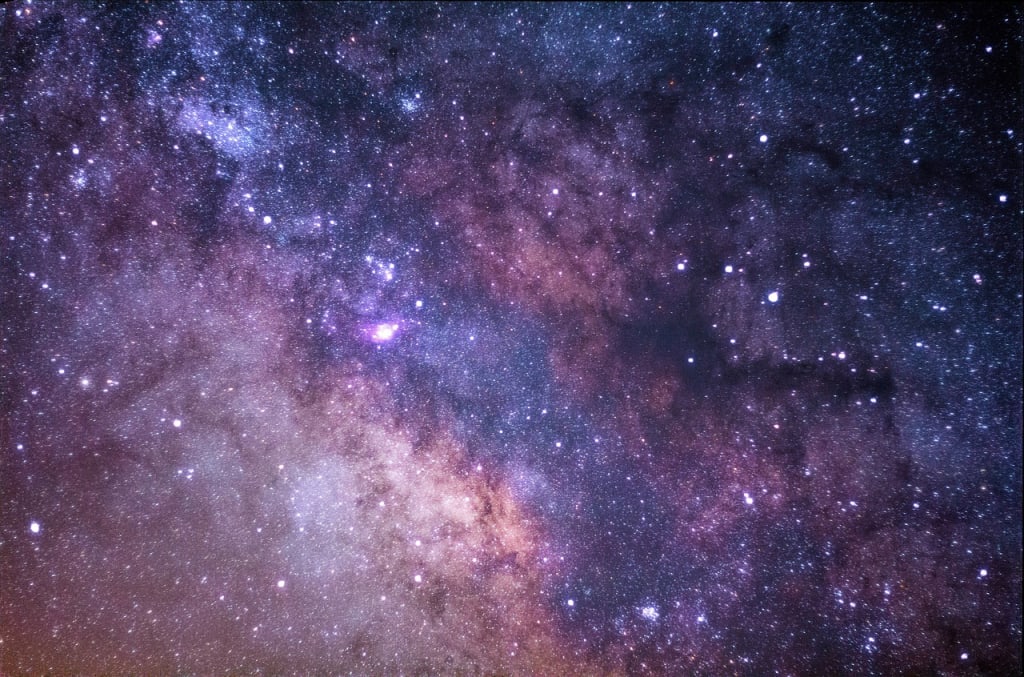
In the captivating journey of cosmic exploration, NASA thrilled us in November 2010 by revealing a celestial wonder—the Fermi Bubbles. These colossal gas bubbles, stretching a mind-boggling 25,000 light years from the heart of our Milky Way, became the stage for a cosmic spectacle. Within this ethereal arena, high-energy particles engaged in a celestial dance with the cosmic elements of dust, gas, and light, giving birth to the most energetic light: gamma rays. Astronomers were baffled; gamma rays of such magnitude were more familiar in distant galaxies, signaling events like the explosive finales of supernovae. Yet, at the heart of our galaxy, where the seemingly serene supermassive black hole resides, a cosmic tranquility was shattered. The mystery deepened—what cataclysmic event birthed these colossal structures, and was our galactic center hiding tumultuous secrets?
A vital clue in unraveling this cosmic enigma emerged in December 2020 with astronomers introducing another entrancing cosmic creation—the eROSITA Bubbles. These expansive spheres, casting soft X-rays, sprawled nearly half the breadth of the Milky Way, enveloping the Fermi Bubbles in a cosmic embrace. These radiating phenomena led astronomers to hypothesize a shared origin, a singular event unleashing an astronomical energy surge—roughly a million times the Sun's lifetime energy output. Calculations, grounded in the velocity of energetic electrons coursing through the bubbles, suggested this cosmic spectacle unfolded a mere 3 million years ago. A cosmic drama so recent that our ancient forebears might have gazed at the heavens, ablaze with an otherworldly glow.
Delving into the cosmic spectacle's origin, two compelling theories emerged, sparking spirited debates within the astronomical community. The first theory proposes that the bubbles trace their genesis to a recent, prodigious burst of star formation toward the galactic center. As nascent stars burst into existence, they unleash scorching stellar winds and, eventually, succumb to explosive supernovae. The interplay of these stellar phenomena births mighty galactic winds, carving vast bubbles in the cosmos. The second theory, equally enthralling, suggests the handiwork of the supermassive black hole, Sagittarius A*, nestled at our galactic core. This astronomical behemoth, approximately 4 million times the Sun's mass, is no stranger to emitting powerful energy jets—a phenomenon observed in distant quasars with analogous supermassive black holes. This theory tantalizingly implies that Sagittarius A*, believed to be dormant, might have unleashed its cosmic might in the not-so-distant past, sparking speculation about its future awakenings.
To demystify these celestial enigmas, scientists turn to the intricate world of hydrodynamic numerical simulations. Supercomputers tirelessly crunch data, exploring varied conditions that might have birthed these cosmic bubbles. While simulations suggest Sagittarius A*'s fervent outbursts likely contributed to this cosmic spectacle, the tantalizing question lingers—could past star formations have choreographed this celestial ballet? Some simulations even entertain the cosmic dance of circumgalactic medium winds from realms beyond our galaxy, adding layers of complexity to the cosmic narrative. These simulations, like cosmic crystal balls, promise ever-preciser revelations as our arsenal of telescopes evolves, ushering us into a new era of cosmic understanding.
As the cosmic drama unfolds, these revelations beckon us to a deeper comprehension of our galactic abode. Our seemingly calm Milky Way, adorned with cosmic wonders, may harbor untold secrets beneath its tranquil facade. The dance of eROSITA and Fermi Bubbles serves as a cosmic overture, inviting us to ponder the mysteries that lie within the heart of our celestial home. The cosmic stage, embellished with celestial wonders, invites us to explore, question, and marvel at the grandeur of the universe, where every discovery unravels new layers of cosmic secrets, expanding our understanding and deepening the cosmic connection that binds us to the vast expanse of the cosmos. In this ongoing cosmic symphony, we stand as both spectators and participants, ever eager to unveil the next cosmic revelation that will illuminate the darkest corners of the universe and redefine our place within the cosmic tapestry.
About the Creator
jason ben
Passionate Media Research Student and Enthusiast.Keeping a Finger on the Pulse of Information, Dedicated to Staying Informed and Informing Others.Future Media Maven in the Making. Let's Connect and Dive into the World of Research!
Enjoyed the story? Support the Creator.
Subscribe for free to receive all their stories in your feed. You could also pledge your support or give them a one-off tip, letting them know you appreciate their work.






Comments (1)
Really good information. Keep it up